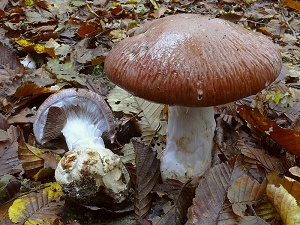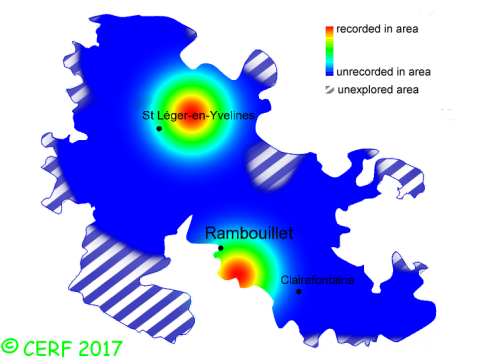| Cortinarius praestans Fr. |
|
|
|
|
|
|
The cap is brown to violaceous. The stem is white to violaceous, bulbous, with a ring zone. The flesh is pale purple, unchanging; its taste is mild; the odour is faint, pleasant; its texture is fibrous. The gills are pale lilac then brown, adnate, crowded . The spore print is rusty brown. This species is mycorrhizal. It grows on the ground, on a rather calcareous soil, with ash, beech, oak. The fruiting period takes place from July to December.
Distinctive features : Purple-brown cap, with a wrinkled margin and white veil remains; white to violet gills in the youth; stem with a non marginate bulbous base, white with a violaceous tinge; very large species Cortinarius praestans is quite rare and localised in the forest of Rambouillet, and is quite rare, more generally speaking . | ||
|
page updated on 14/01/18

